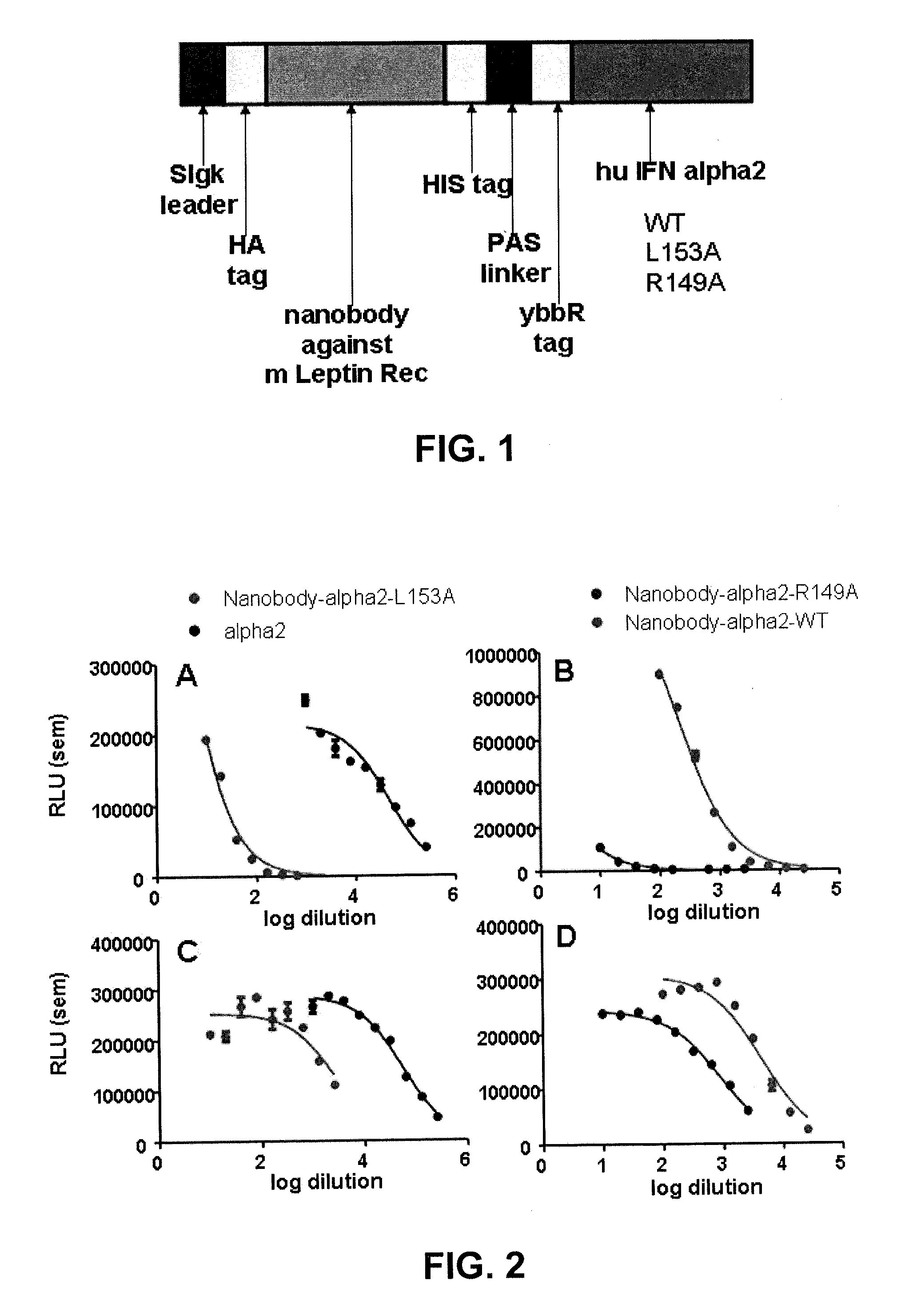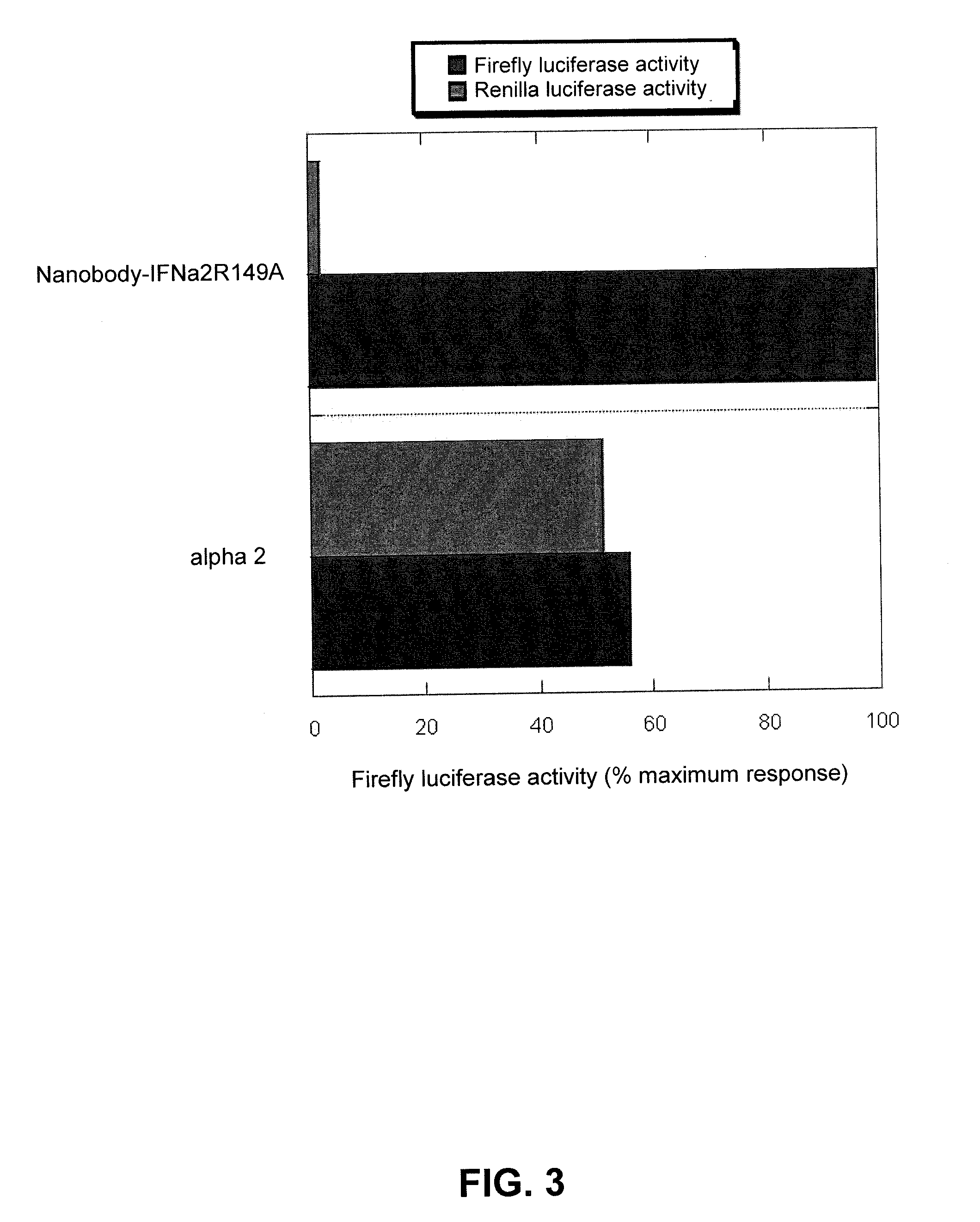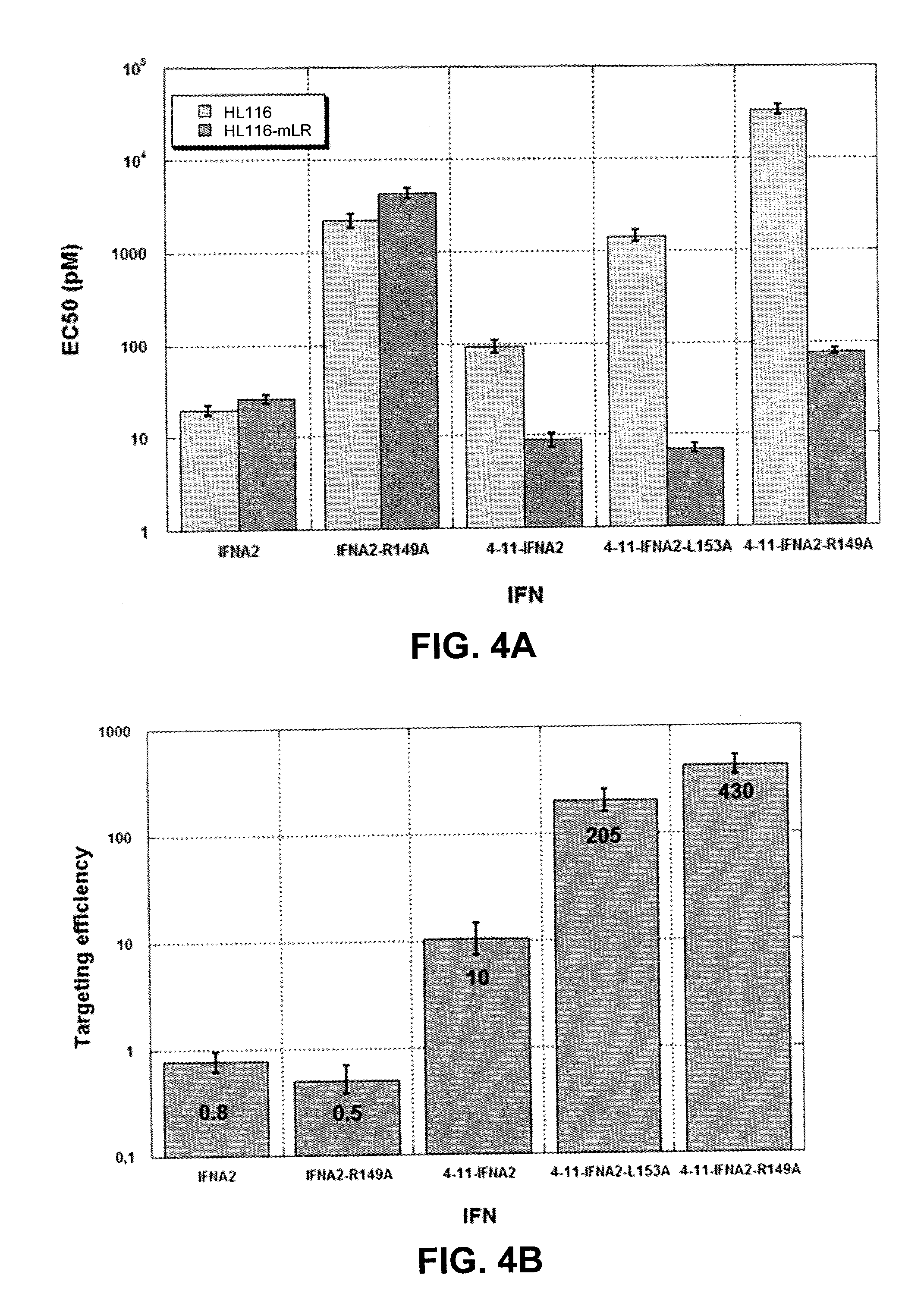Targeted mutant alpha-helical bundle cytokines
- Summary
- Abstract
- Description
- Claims
- Application Information
AI Technical Summary
Benefits of technology
Problems solved by technology
Method used
Image
Examples
example 1
The Nanobody-Interferon Fusion Proteins
[0065]FIG. 1 shows a schematic representation of the nanobody-IFN fusion proteins constructed with either IFNα2 wild-type or the L153A and R149A mutants.
example 2
IFN Activity of the Nanobody-IFN Fusion Proteins is Targeted Toward Murine Leptin Receptor Expressing Cells
[0066]The three nanobody fusion proteins with IFNα2 WT, IFNα2 L153A or R149A were assayed on both HL116 and HL116-mLR-clone 10 cells, which express the murine leptin receptor. The IFNα2 alone was also assayed in this assay system in order to check that the two cell clones do not differ in their IFN responsiveness. Indeed, both HL116 and HL116-mLR-clone 10 cells are equally sensitive to this IFN (FIGS. 2A and 2C, black symbols). The IFN activity of the three nanobody-IFN fusion proteins is, however, dramatically increased in cells expressing the leptin receptor compared to parental HL116 cells (compare FIG. 2A with FIG. 2C and FIG. 2B with FIG. 2D).
[0067]It was estimated that cells expressing the leptin receptor are 10-, 100- and 1000-fold more sensitive than parental HL116 cells to the nanobody-IFN WT, L153A and R149A, respectively. Since the affinities for IFNAR2 of the IFN mu...
example 3
The IFN Activity of the Nanobody-IFN Fusion Proteins on Cells Expressing the Leptin Receptor is Mediated by Both IFN Receptor Chains
[0072]In order to determine whether the IFN activity of the nanobody-IFN fusion proteins needs the activation of the IFN receptor, HL116 cells expressing the murine leptin receptor were pretreated with neutralizing antibodies against IFNAR1 or IFNAR2, and then stimulated with the nanobody-IFNA2-R149A fusion protein. The activity of the IFN-induced luciferase was measured. FIG. 7 shows that both anti-IFNAR1 and anti-IFNAR2 neutralizing antibodies inhibit the IFN activity of the nanobody-IFNA2-R149A.
PUM
| Property | Measurement | Unit |
|---|---|---|
| Cell angle | aaaaa | aaaaa |
| Surface | aaaaa | aaaaa |
| Affinity | aaaaa | aaaaa |
Abstract
Description
Claims
Application Information
 Login to View More
Login to View More - R&D
- Intellectual Property
- Life Sciences
- Materials
- Tech Scout
- Unparalleled Data Quality
- Higher Quality Content
- 60% Fewer Hallucinations
Browse by: Latest US Patents, China's latest patents, Technical Efficacy Thesaurus, Application Domain, Technology Topic, Popular Technical Reports.
© 2025 PatSnap. All rights reserved.Legal|Privacy policy|Modern Slavery Act Transparency Statement|Sitemap|About US| Contact US: help@patsnap.com



